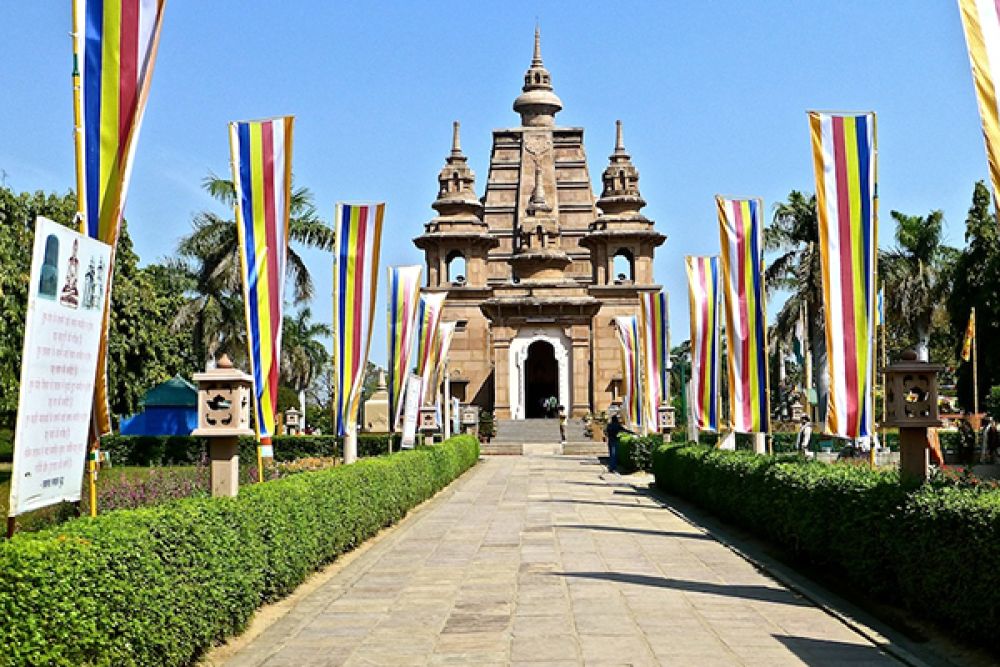

Mulagandha Kuti Vihar stands in the serene land of Sarnath, a place of great reverence that resonates with the history of Buddhism. Sarnath, a mere 10 kilometers from the ancient city of Varanasi, is where Gautama Buddha delivered his first sermon after attaining enlightenment, making it one of the four holy Buddhist sites sanctioned by the Buddha himself for pilgrimage.
The history of tourism in Sarnath is deeply tied to the history of Buddhism itself. Following the Buddha's first sermon, the Dhamek Stupa was erected in this sacred place, which for centuries attracted Buddhist pilgrims from different parts of the world, creating a rich tradition of religious tourism. The name 'Mulagandha Kuti Vihar' refers to the original temple believed to have been built at the same spot where Buddha used to meditate while visiting Sarnath. Over the centuries, this ancient site fell into disrepair and was eventually lost.
In the late 19th and early 20th centuries, with the revival of interest in Buddhist heritage by Western archaeologists and Asian Buddhists, the lost site of Sarnath was rediscovered, leading to the establishment of the modern Mulagandha Kuti Vihar. This temple was built in 1931 by the Sri Lankan Mahabodhi Society and now stands as a prime example of the Buddhist architectural revival.
The Vihar showcases a remarkable blend of ancient style with modern construction, featuring exquisite murals by Japanese artist Kosetsu Nosu. Its frescoes depicting the life of the Buddha and enshrining a golden statue of him add to its spiritual ambiance. The temple resonates with the prayers and chants of monks, providing a peaceful retreat for visitors.
With the increase in spiritual tourism, Sarnath, and Mulagandha Kuti Vihar in particular, have seen a surge in visitors seeking mindfulness and historical understanding. Interactive tours, meditation sessions, and increased accessibility to ancient sites have been developed to provide an immersive experience for tourists. Eco-friendly tourism has also gained prominence, with initiatives to conserve the sacred site and its surroundings.
Visitors are welcome all year round, with the peak season being from October to March when the weather is most pleasant. The temple is open daily, and there is no entry fee, although donations are accepted. Guided tours can greatly enhance the experience, as the rich history of Buddhism and Sarnath can be quite intricate and profound.
Note: Photography is allowed in the temple complex, but visitors should always be respectful and check for any restrictions, especially during prayer sessions.
The legacy of Mulagandha Kuti Vihar, Sarnath, as a Buddhist pilgrimage site, continues to grow as it attracts visitors from across the globe. Its historical significance, coupled with the serene teachings of Buddhism, makes it a must-visit destination for those seeking peace, history, and spirituality in India.